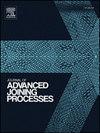Relationship between the developed interfacial area ratio and the adhesion of the bonded joint
IF 4
Q2 MATERIALS SCIENCE, MULTIDISCIPLINARY
引用次数: 0
Abstract
Bonding technologies have evolved significantly over the past decades, playing a crucial role in the field of joining technologies. To date, however, there is no consensus among research groups as to whether surface texture or surface wettability, or both, affect the strength of bonded joints. Bonded joints, as a bonding technique, are highly dependent on the chemical composition of the adhesive or binder. It is also important to note that the strength and the quality of a bonded joint is greatly influenced by surface adhesion and its related phenomena. From a materials science perspective, surface adhesion is characterised by the level of surface wetting and the total surface energy. In addition, microtopographies and other geometrical features play a key role in bond formation. In this research, the goal is to create controlled microtopographies on DP600 steel surfaces, mainly using femtosecond pulsed laser surface treatment techniques. The ability of adhesives to fill microtopographies specifically, the extent and manner in which micro-scale geometries and structures are filled is also investigated. This allows for the establishment of correlations between the strength of adhesive bonds and the shape characteristics of the microtopography, both in the surface-activated and non-surface-activated states.
发育界面面积比与粘结接头附着力的关系
在过去的几十年里,焊接技术得到了长足的发展,在焊接技术领域发挥着至关重要的作用。然而,到目前为止,对于表面纹理或表面润湿性,或两者都影响粘接接头的强度,研究小组尚未达成共识。粘结接头作为一种粘结技术,高度依赖于胶粘剂或粘结剂的化学成分。同样重要的是要注意,粘结接头的强度和质量在很大程度上受到表面粘附及其相关现象的影响。从材料科学的角度来看,表面粘附的特征是表面湿润程度和总表面能。此外,微观形貌和其他几何特征在键的形成中起着关键作用。在本研究中,主要使用飞秒脉冲激光表面处理技术,在DP600钢表面上创建可控的微形貌。粘接剂填充微地形的能力,以及微尺度几何形状和结构填充的程度和方式也进行了研究。这允许在表面激活和非表面激活状态下建立粘合剂强度和微形貌形状特征之间的相关性。
本文章由计算机程序翻译,如有差异,请以英文原文为准。
求助全文
约1分钟内获得全文
求助全文

 求助内容:
求助内容: 应助结果提醒方式:
应助结果提醒方式:


